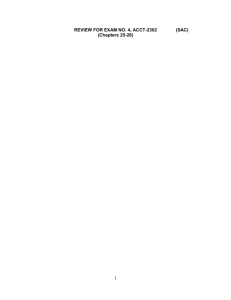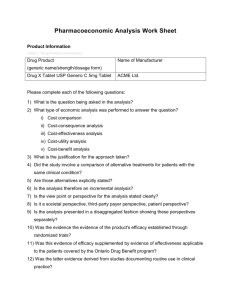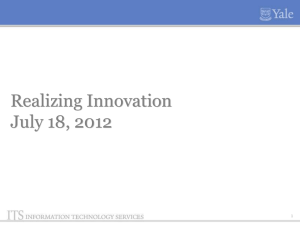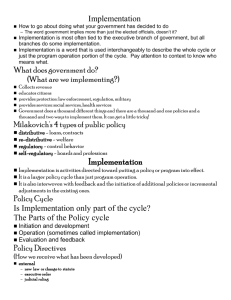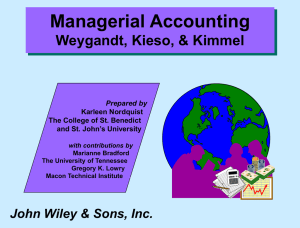Differential Analysis and Product Pricing
advertisement
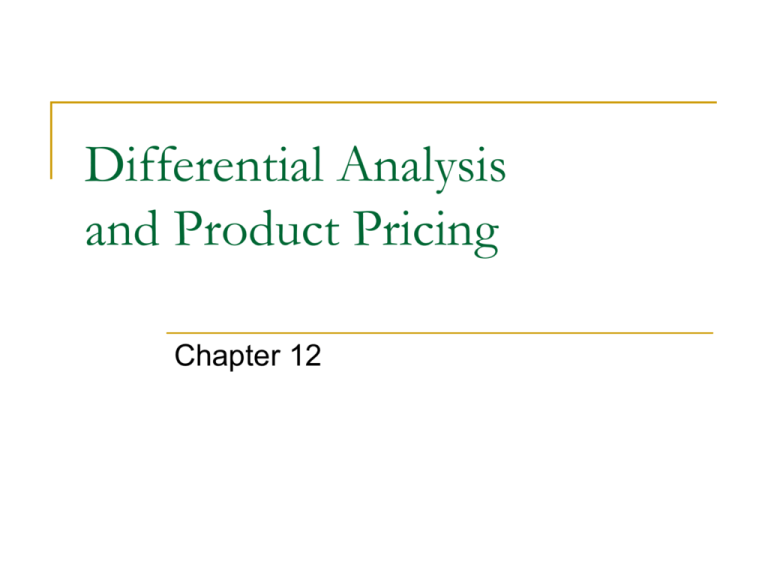
Differential Analysis and Product Pricing Chapter 12 Identification of Relevant Costs and Revenues for Decision Making A relevant cost (revenue) is a cost (revenue) that can have an impact on a decision Characteristics of relevant costs (revenues) Cost (revenue) that varies between alternatives Incremental or differential cost (revenue) Occur in the future Opportunity costs Benefit given up when one alternative is chosen over another Identification of Relevant Costs and Revenues for Decision Making Sunk cost A cost that has already been incurred Always irrelevant because it cannot be changed Differential or Incremental Analysis Analysis of the differences in revenues and costs between alternative courses of action Typical applications Sell an unused asset, or keep it and lease it to someone else Discontinue a product or segment, or continue it Make a component or purchase it from a supplier Keep existing equipment or replace it Sell a product as it is, or process it further Accept business at a special price Applications of Incremental Analysis Sell or lease Relevant items Sell alternative Potential sales price, if any Cost to dispose of the item Lease alternative Lease revenue Maintenance costs, insurance, property taxes, etc. if they will continue to be paid by us Applications of Incremental Analysis Discontinue a product or segment Relevant items Amount of revenue that will be lost if the product or segment is discontinued Amount of cost that can be avoided if the product or segment is discontinued If the amount of cost that can be avoided exceeds the lost revenue, it is financially wise to discontinue the product or segment Applications of Incremental Analysis Make or buy a component Relevant items Make alternative Incremental costs (direct materials, direct labor, variable overhead) Fixed overhead is irrelevant if it does not increase as a result of the additional production Buy alternative Purchase price from supplier Alternative uses for the manufacturing capacity that becomes available Applications of Incremental Analysis Keep existing equipment or replace it Relevant items Difference in operating costs between the existing and proposed equipment Any change in revenue that may result from increased (or decreased) capacity Purchase price of the new equipment (included in the operating costs as depreciation) Sales value, if any, of the current equipment The original cost of the current equipment is irrelevant as it has already been incurred Applications of Incremental Analysis Sell a product now or process further Relevant items Incremental cost to process the item further Incremental revenue if the item is processed further If the incremental revenue exceeds the incremental cost, it is financially wise to process the product further Applications of Incremental Analysis Accept business at a special price Relevant items Sales price to be received for the items Incremental costs to be incurred producing the items (direct materials, direct labor, variable overhead) Fixed overhead is irrelevant if it does not increase as a result of the greater production Product Pricing Under Production Constraints The contribution margin per unit provides some guidance as to which products should be produced Emphasis should be placed on the item with the largest contribution margin If there are production constraints (limited amount of resources), we must consider the demands each product places on the resources Product Pricing Under Production Constraints Produce those products that generate the greatest contribution per unit of the constraining resource Contribution margin per unit Amount of constraining resource required per unit Contribution per unit of the constraining resource Product A $ 120.00 Product B $ 60.00 Product C $ 48.00 20 8 6 $ 6.00 $ 7.50 $ 8.00
